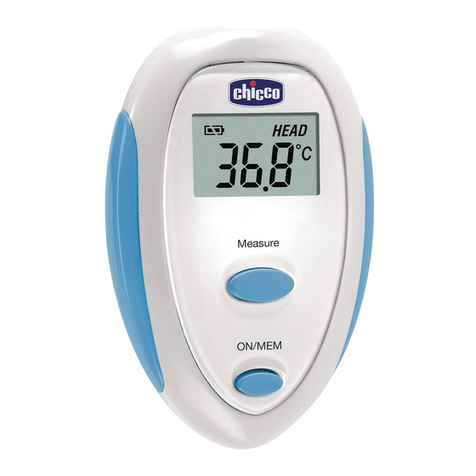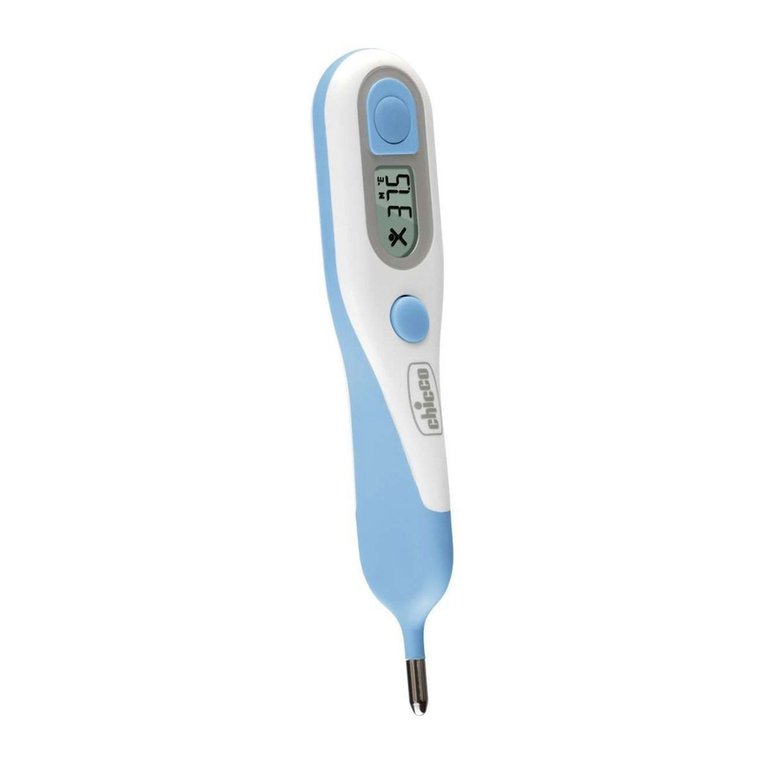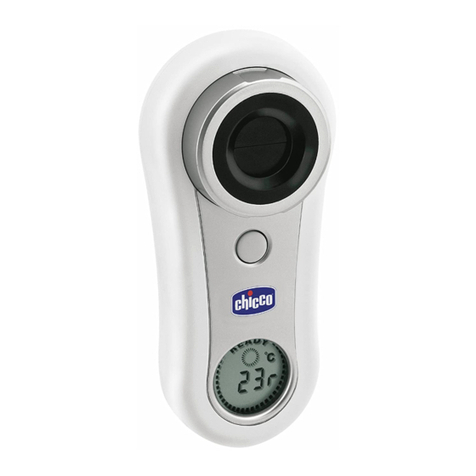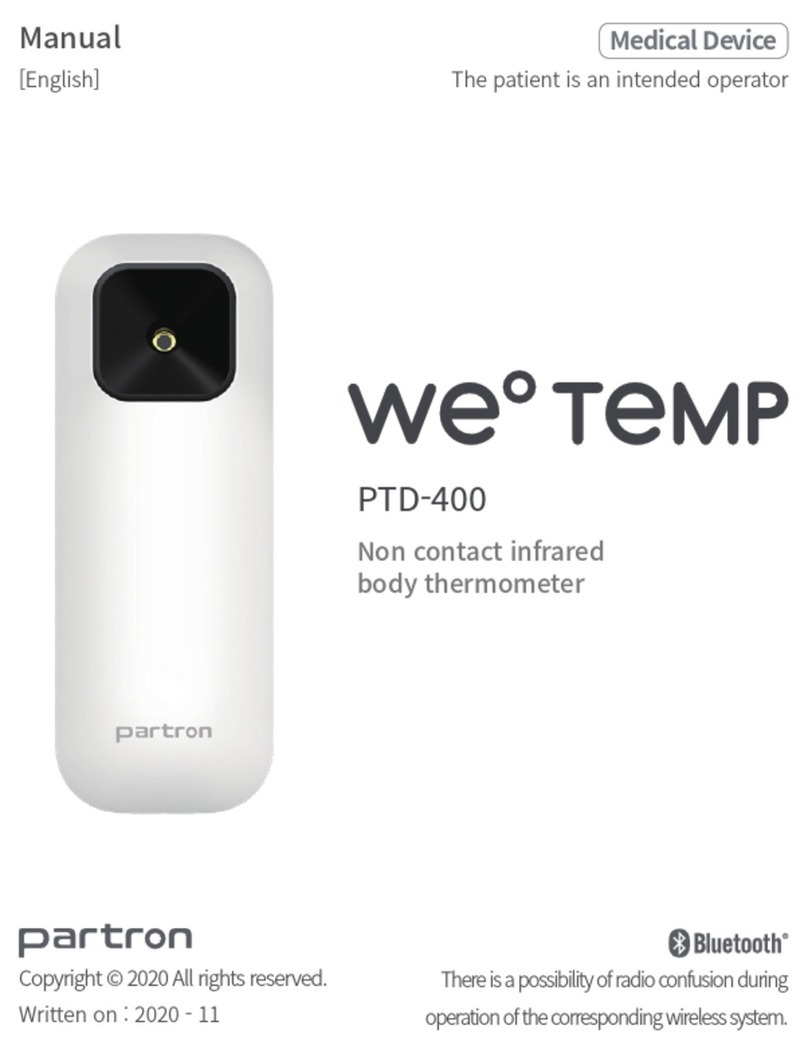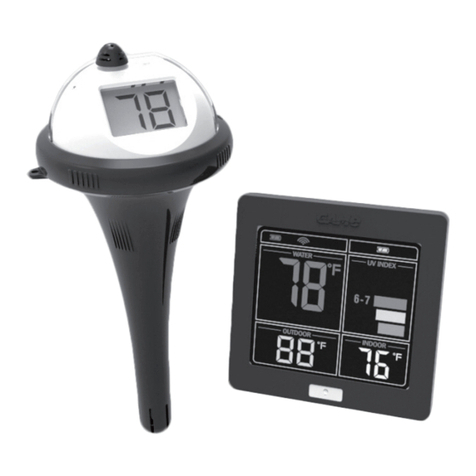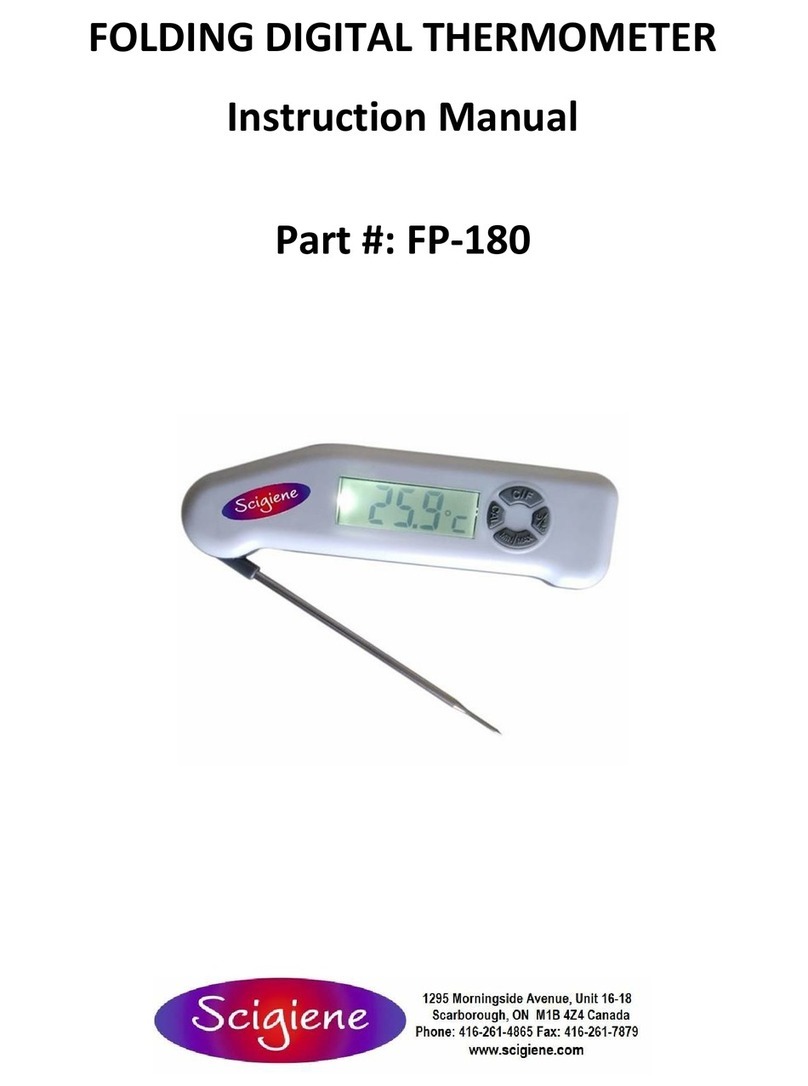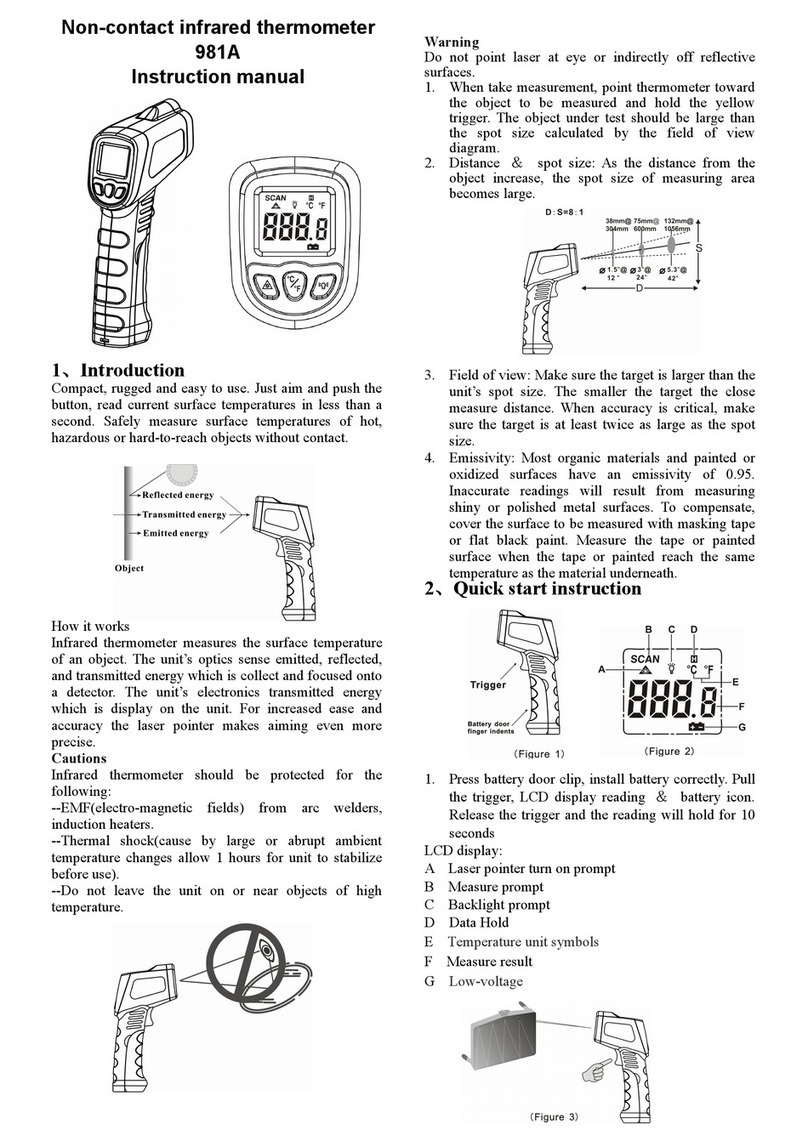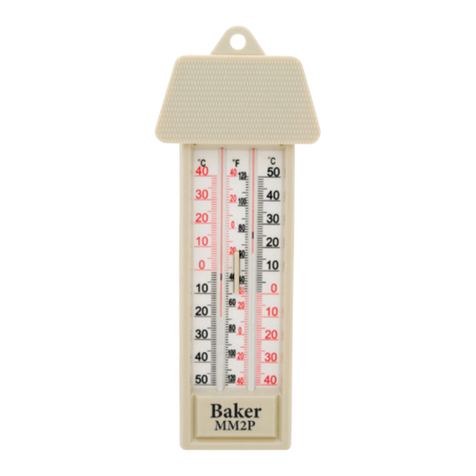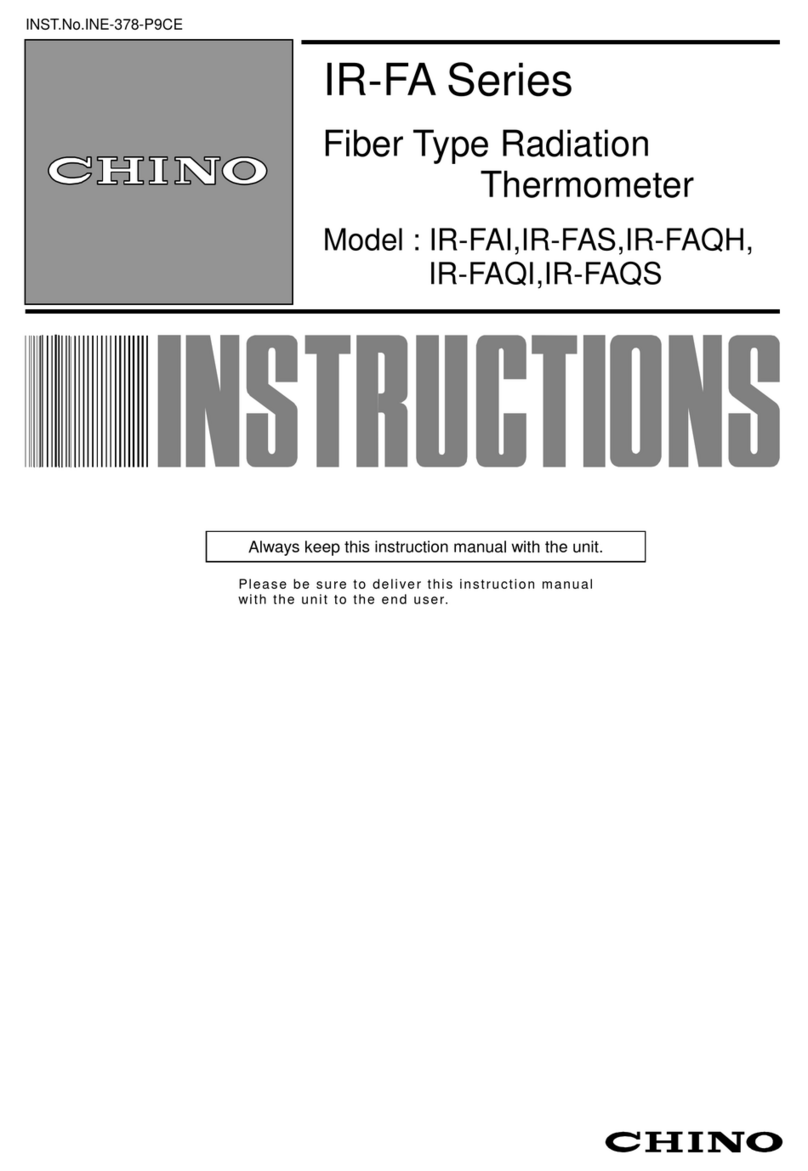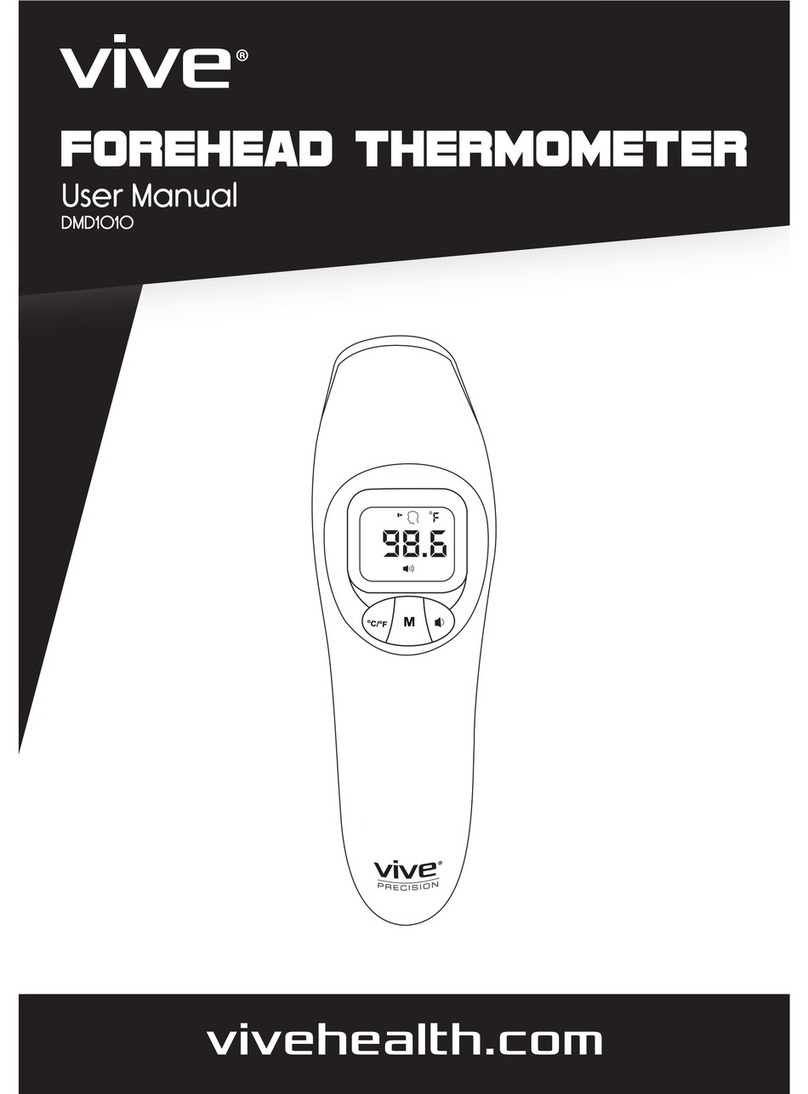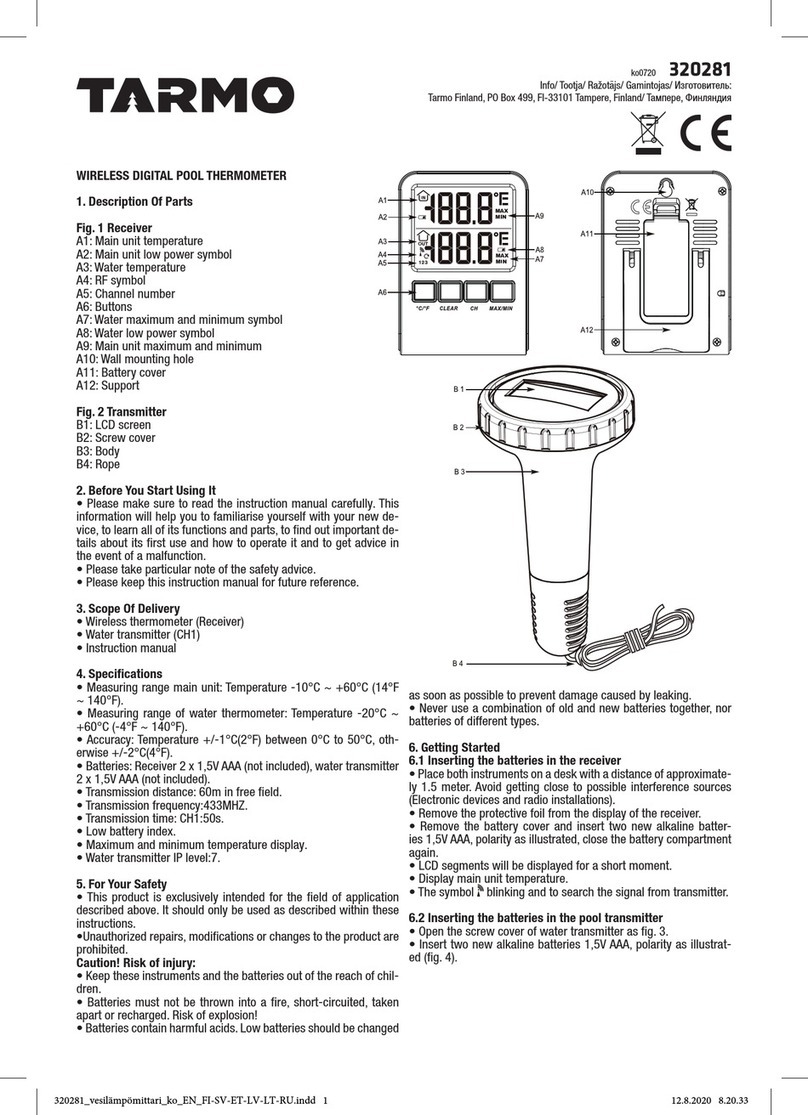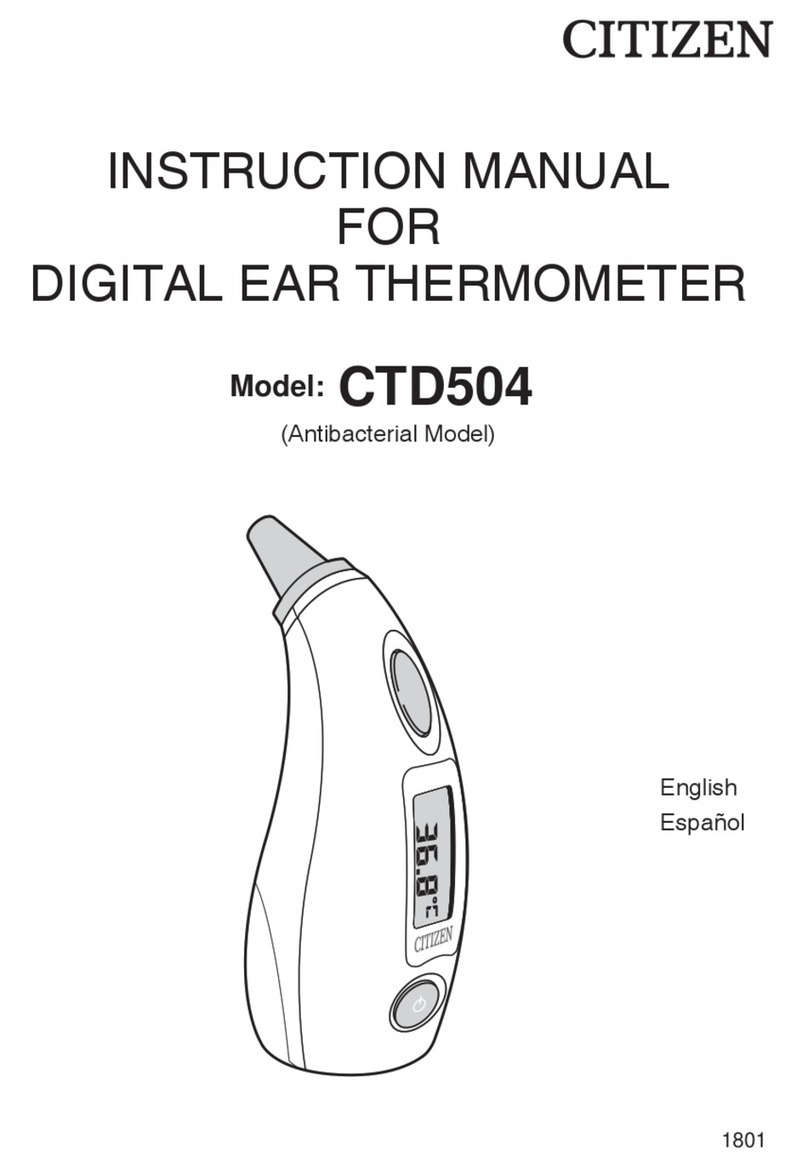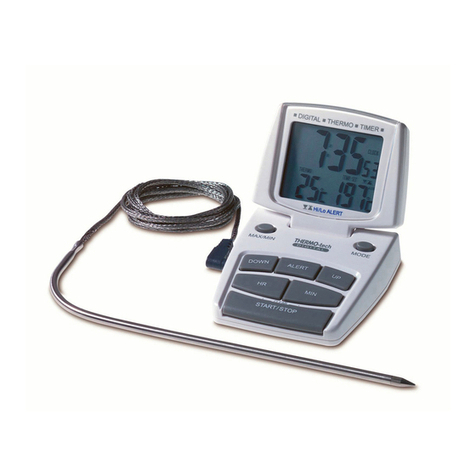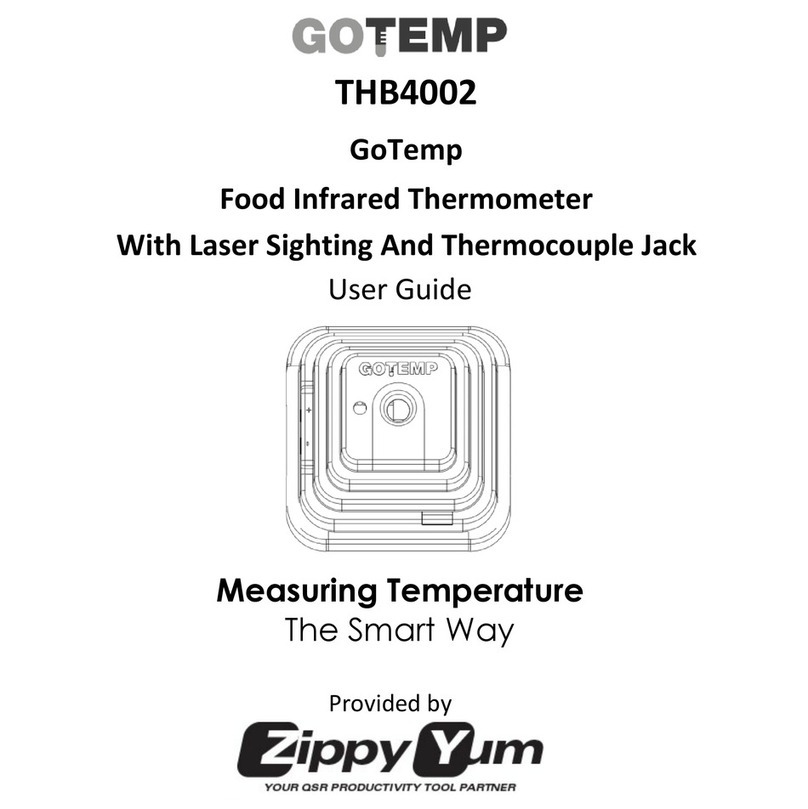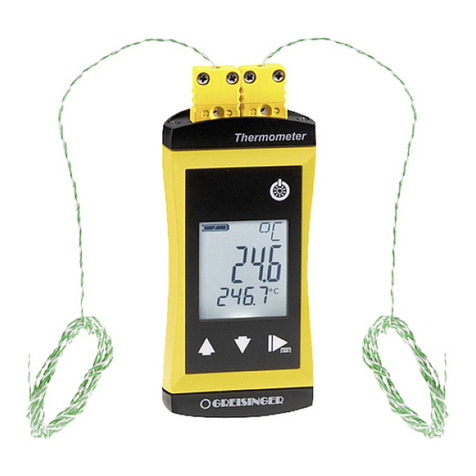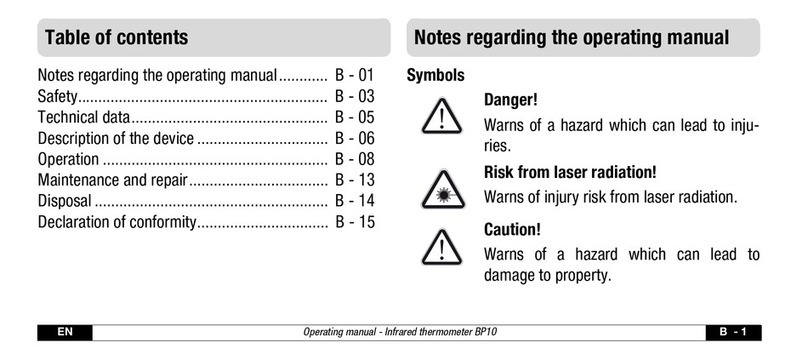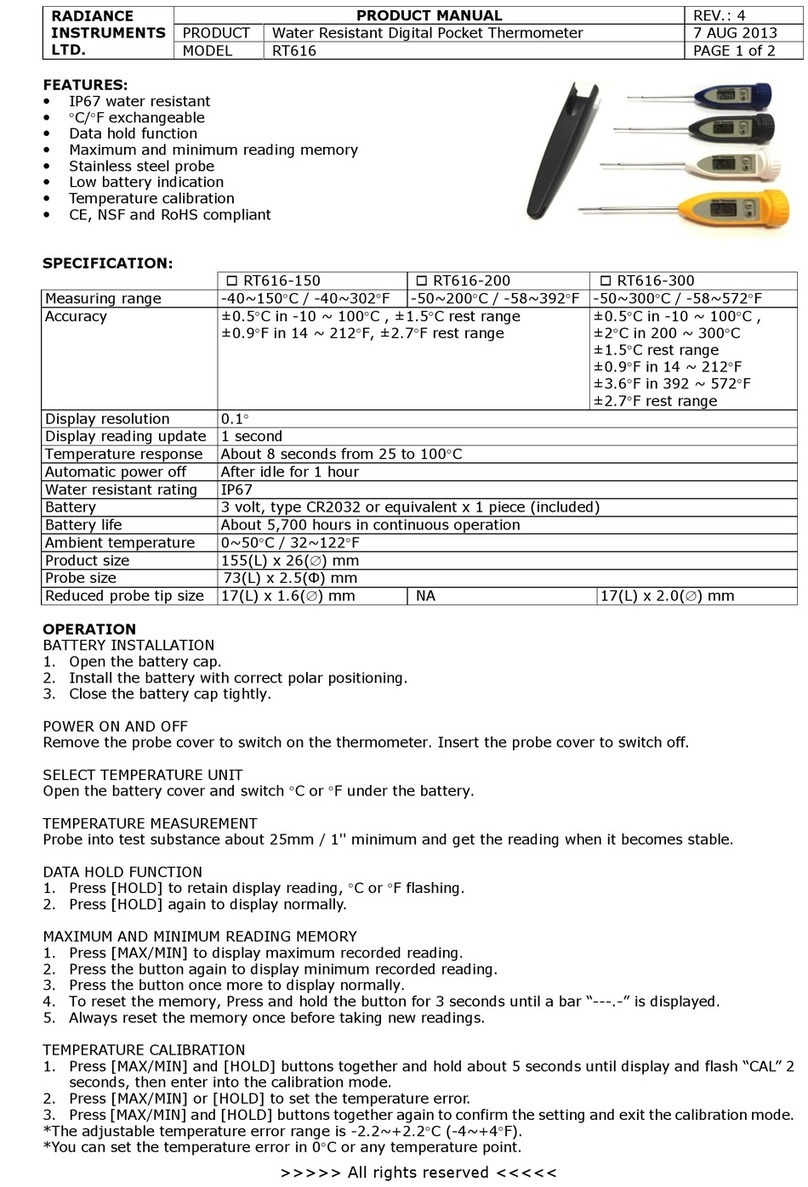
4
nei 30 minuti successivi ad attività
fisica, bagno o balneazione, assun-
zione di cibi e/o bevande calde/
fredde o al rientro dall’aperto.
• Non effettuare misurazioni ripe-
tute ravvicinate: attendere almeno
1 minuto tra una misurazione e la
successiva. Misurazioni ripetute
potrebbero causare una rilevazione
errata della temperatura. Utilizzare
altrimenti la media delle misurazio-
ni.
• Nonesisteunvaloreditemperatura
corporea assoluto. Mantenere regi-
strazioni affidabili della propria tem-
peratura corporea come riferimento
al fine di giudicare e stabilire lo stato
di febbre.
• Qualorasidesideriavereassistenza
durante l’impostazione, utilizzo e
manutenzione, contattare il distri-
butore.
• Tenerelebatteriesemprefuoridalla
portata dei bambini: la loro ingestio-
ne potrebbe causare intossicazioni o
un grave danno per la salute.
• Primadiprocedereallamisurazione
della temperatura, rimuovere dalla
fronte eventuali tracce di sudore,
trucco, creme, ecc. ed attendere
qualche minuto prima di eseguire la
misurazione
• Seilsensoreadinfrarossièpuntato
in direzione di un oggetto caldo, esso
esegue la lettura della temperatura
a distanza. Per evitare letture erro-
nee, ridurre al minimo l’intervallo
che intercorre tra il momento in cui
il termometro è pronto per la misu-
razione e la scansione della fronte ed
evitare di orientarlo verso sorgenti
calde.
• Se possibile, effettuare la misura-
zione puntando sempre il sensore
infrarossi al centro della fronte.
• Tenere il termometro tra le mani
troppo a lungo e/o esporre il disposi-
tivo a fonti di calore esterne potreb-
be causare una lettura falsata della
temperatura ambiente. Per questo
motivo, la misurazione della tempe-
ratura corporea potrebbe risultare
inferiore o superiore a quella reale.
• L’eventuale utilizzo su persone con
ridotte capacità cognitive o sui bam-
bini deve avvenire sotto la supervi-
sione di un adulto.
MISURARE LA TEMPERATURA
DELLA FRONTE
Ricordarsi che il termometro neces-
sita di essere lasciato nella stanza in
cui è prevista l’esecuzione della misu-
razione per almeno 30 minuti prima
dell’uso.
1. Il tentativo di eseguire misurazioni
in siti corporei diversi dalla fronte
può produrre risultati di misurazio-
ne inesatti.
2. Durante la misurazione il bambino
dovrebbe essere mantenuto fermo
o l’adulto dovrebbe mantenersi fer-
mo.
3. Misurazioni di temperatura fronta-
le mediante termometri ad infra-
rossi sono normalmente equiva-
lenti a misurazioni di temperatura
orali effettuate con termometro
digitale o a liquidi metallici.
4. Misurazioni di temperatura ef-
fettuate durante il sonno non
dovrebbero essere confrontate
direttamente con misurazioni du-
rante lo stato di veglia, poiché la
